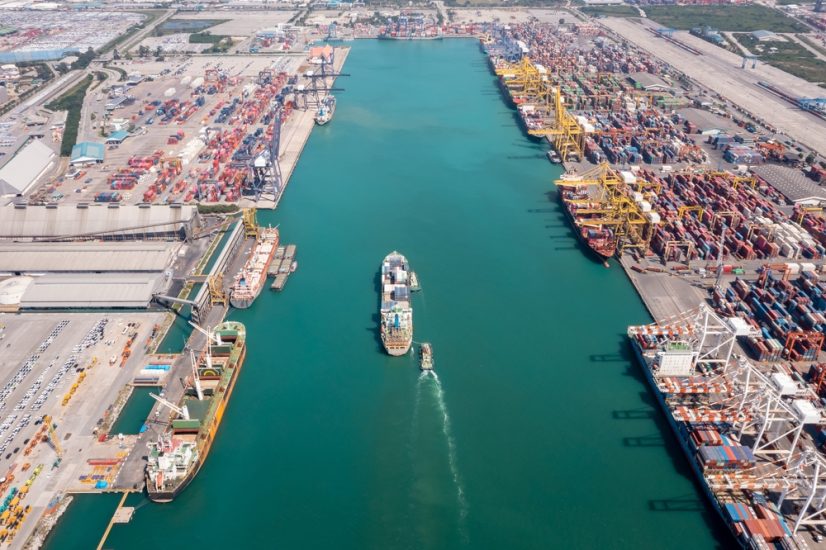The UK Department for Transport (DfT) has published new guidance for the maritime industry on the threat from aerial drones and potential response options to mitigate the threat.
Increasingly, aerial drones are being used maliciously in events that have led to disruption and harm. They can be used to pose a wide range of threats to ships, ranging from minor harm due to inappropriate use by passengers, to criminal activity and up to state sponsored terrorism at the extreme. These threats are often similar in nature to conventional threats, but involve the use of a drone as a tool. Drones can be used as a different attack vector to deliver explosive threats as an alternative to water borne improvised explosive devices or anti-ship missiles to damage a vessel. Extreme examples have used military grade or weaponised commercial drones, as seen in the attacks on the MV Mercer Street and the Pacific Zircon vessels. More recently, Houthi rebels have launched numerous drone attacks on ships in the Red Sea. There is also potential for ‘perch and stare’ activity where a drone lands on the vessel and provides extended undetected surveillance or intercepts cyber signals from the vessel.
The DfT guidance, published on May 20, covers an introduction to drone technologies, including current and future drones; an outline of drone threats to commercial maritime vessels and how they can be mitigated; an introduction to counter drone technologies, including current options; and information on evaluating and selecting counter drone technology for use in the maritime domain.
Aerial drones considered in the guidance include systems of a commercial nature such as small commercially available drones that are less than 20kg in weight as defined by the UK Civil Aviation Authority (CAA), or weaponised drones (sometimes referred to as loitering munitions) such as the Shahed 136 loitering munition.
DfT warns that the maritime industry should also be aware of emerging drone technologies. For example, the use of AI enhances targeting for precision payload delivery including automatic target recognition. In addition, many drones currently rely on GPS to provide location data. However, drones are emerging with capabilities to determine their location with other technology including inertial navigation, terrain and target recognition cameras or alternative satellite systems to increase their navigation resilience.
The guidance calls for maritime organisations to conduct a “thorough aerial drone threat and vulnerability assessment to understand which drone threats are relevant for their operations, particularly factoring in geographies of activity, cargo and vessel type and any geopolitical considerations”.
Multiple options exist to mitigate drone threats and the DfT guidance lists some of the most common, such as vessel target hardening and the use of counter-drone technologies, which were initially designed for state level operation to counter military grade threats but are now increasingly being marketed for civil applications.
“C-UAS systems are often best deployed as a suite of systems to counter the threat of aerial drones,” the guidance states. “Operators may decide to only install part of the C-UAS capability, for example, a basic detection capability to provide early warning and inform an onboard response without any active defence technology.”
DfT adds that organisations should first conduct an aerial drone threat and vulnerability assessment before investing in C-UAS technology. The guidance lists a number of technologies as well as their strengths and weaknesses. For example, while radar systems may offer greater range and tracking capabilities, they could potentially interfere with other radars such as the ship’s marine radar or port radars and may need to be licensed to operate on specific frequencies. Effector technologies and their strengths and weaknesses for maritime operations are also covered in the guidance. It is worth noting for instance, that in some territories, especially conflict zones, the possession of firearms onboard may be seen as illegal resulting in severe consequences if the vessel is inspected, even if the weapons were not used. Additionally, it may be illegal to simply be in possession of jamming systems in some territories, with GPS jammers being of particular concern in many parts of the world. “The interference effect of jamming may cross into territories beyond those where the ship is located, thus introducing wider regulatory concerns,” the guidance notes. “Use in international waters could interfere with systems in a nation’s territorial waters.” And spoofing, which involves cyber signal interception, may be classified as espionage in some countries.
DfT recommends that organisations considering installing C-UAS systems should undertake in-situ demonstration and testing to fully understand the practicality and performance levels at sea. “This could range from weather resistance to validation of C-UAS capability to ensure they meet operational requirements. Organisations should also assess maintenance requirements, including support options in the event of system damage or malfunction at sea.”
As part of the guidance, DfT has provided a comprehensive checklist that organisations can discuss with potential C-UAS suppliers before purchasing decisions are made.
Ultimately, depending on the vulnerabilities and threats identified, maritime organisations may require multiple approaches to provide the desired level of protection against drones. This could, DfT says, include having emergency response plans, protected muster areas and C-UAS systems to provide an early warning. “Use of several sensors for detection can provide greater assurance and understanding of any suspected threat, for example, integrating a radar for long range drone detection and cameras to assist the CUAS operator in assessing if the drone poses a threat.”
For more information
Image: Shutterstock




